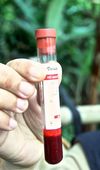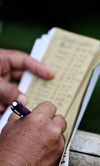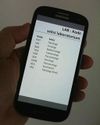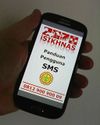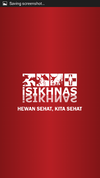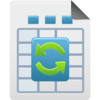Sumber Daya Pelatihan ISIKHNAS
Daftar isi
- 1 Pusat Pelatihan iSIKHNAS
- 2 Informasi untuk Pelatih dan Koordinator
- 3 iSIKHNAS Modul
- 4 Modul 1 : Rutin Pelaporan dan Kasus Penyakit Manajemen
- 5 Modul 2 : Pelsa : Pelapor Desa
- 6 Modul 3 : Penyakit Penting Investigasi dan Respon
- 7 Modul 4 : SKKH
- 8 Modul 5 : Surveilans actif
- 9 Modul 6 : Populasi Hewan
- 10 Modul 7 : Vaksinasi
- 11 Modul 8 : Instant Messaging untuk iSIKHNAS
- 12 Modul 9 : Pendaftaran Pemilik dan ID Hewan
- 13 Modul 10 : Manajemen Peternakan
- 14 Modul 11 : Kueri sistem
- 15 Module 12 : Administration SMS
- 16 Module 13 : Rumah Potong
- 17 Modul 14 : iSIKHNAS Koordinator
- 18 Modul 15 : iSIKHNAS WIKI
- 19 Modul 16 : Data dan laporan iSIKHNAS
- 20 Modul 17 : Manajemen pelatihan
- 21 Module 18 : Spreadsheet uploads
- 22 Modul 19 : iSIKHNAS Mobile App
- 23 Module 20 : Data Laboratorium
Pusat Pelatihan iSIKHNAS
Bagian ini dirancang untuk pelatih dan orang lain yang terlibat dalam mempersiapkan pelatihan bagi staf kesehatan hewan dan hewan di Indonesia untuk membantu mereka dalam menggunakan Sistem Informasi Kesehatan Hewan Nasional, iSIKHNAS.
Pelatihan untuk iSIKHNAS dibagi menjadi beberapa Modul Pelatihan yang mudah diatur. Modul-modul ini dirancang untuk
- memastikan pelatihan dilakukan secepat dan seefisien mungkin - sebagian besar satu hari atau kurang,
- mengurangi banyaknya persiapan yang diperlukan oleh para pelatih,
- memastikan kekonsistenan bahan pelatihan dan pendekatannya,
- sefleksibel mungkin sehingga dapat digunakan sesuai dengan kebutuhan dan prioritas lokal,
- digunakan untuk kelompok maupun individu, sebagai latihan dan sebagai unit untuk belajar secara mandiri,
- mendorong program yang sedang berlangsung bagi pengembangan staf
Informasi untuk Pelatih dan Koordinator
Sistem yang sangat bermanfaat ini terdiri dari berbagai macam fungsi untuk bergagai staf kesehatan hewan sehingga untuk menjadikan pelatihan ini mudah diatur dan efesien, fungsi-fungsi ini telah dipecah-pecah ke dalam modul yang singkat, dan spesifik untuk tujuan yang diinginkan, yang sebagian besar dapat dilatih dalam satu hari dan sering kali kurang dari satu hari.
Maksudnya bahwa ketika iSIKHNAS pertama kali diperkenalkan di kabupaten, SEMUA staf veteriner yang setiap hari terlibat dalam pelayanan kesehatan hewan bagi para peternak dan ternaknya dilatih oleh koordinator kabupaten yang baru dengan bantuan dari koordinator provinsi dan pelatih ahli. Modul pertama akan selalu Modul 1 : Pelaporan Penyakit Rutin dan Manajemen Kasus." Modul ini memperkenalkan staf mengenai pentingnya prinsip-prinsip dan filosofi dibalik dibuatnya iSIKHNAS, memperkenalkan fungsi-fungsi inti dan mekanisme pelaporan dan memberikan praktik lebih dan membiasakan diri dengan sistem yang didorong oleh pelayanan. Modul ini terdiri dari pelaporan penyakit rutin dan prioritas dari lapangan, pengobatan, pengiriman sampel ke lab, tindak lanjut dan hasil - tugas yang paling umum dan inti yang dilakukan oleh semua staf di dinas kabupaten. Modul 1 adalah prasyarat untuk semua modul yang ditujukan bagi kelompok staf lapangan teknis.
From experience, the first module requires motivated and well-supported trainers with good energy levels, lots of patience and time to allow new users of the system opportunity to practice and gain confidence. It is the module which will determine how well staff adapt to change and embrace the ongoing training of new features in the future. It will set the tone for the other modules which follow. After this first module, district coordinators become solely responsible for developing and undertaking an ongoing training plan for staff. Such a plan should be responsive to the district and provincial priorities, but also to the level of staff motivation and interest and their ability to absorb and adopt new practices. It should be noted that it will be the eventual responsibility of the district coordinator to train all new staff (who are new to iSIKHNAS and new to the district or province) in Module 1 as the need arises. By the time this is necessary there will be many more confident users able to assist in this training task.
Once the basic principles, the first SMS messages and the reflex to use the extensive system queries to help with accurate reporting have been mastered, experience shows that staff pick up and use all subsequent messages very quickly and easily. It is recommended that at least one new module be introduced to staff every month, bearing in mind that not all staff will require the all the tools available so the target audience may differ each time. Not all staff are involved in production and breeding or Abattoir reporting, not all staff will require the Priority Disease Investigation and Response training, and so on. Some modules, such as Village Population Statistics, Vaccination Activities or Active Surveillance (Modules 5, 6 and 7), involve one message each and should come just prior to the planned activities of collecting and recording village animal population data, or a planned vaccination activity as part of a district or provincial program, or a planned sampling activity as part of an active surveillance program.
Some modules are dependent on others and must follow in a logical sequence, Module 9 : Farmer Registration and Animal Identification must precede Module 10 : Breeding Management, for example. Some modules will only be of use and interest to a very small group of system users and so Coordinators may decide to give ad-hoc, one-on-one training in, for example, the use of Instant Messaging (Module 8) or the use of iSIKHNAS data using the website (Module 16). A few modules will be useful to staff with greater administrative responsibility in order to provide the coordinator with greater support in farmer and animal registration, spreadsheet uploads or training management (Module 9, 17 and 18).
For those districts with a network of village-level reporters, Module 2 : Pelsa : Village Reporter module should probably follow quickly after the first module. Staff will be able to assist in the training which often requires higher levels of input and reassurance. A Signs Recognition sub-module can be conducted at the same time to further engage and equip this valuable resource.
As soon as training in a module has taken place, it is imperative that staff commence to use the new tools (sms messages, most often) immediately. It must be adopted by all relevant staff at the same time to ensure excellent compliance from the outset. Coordinators should monitor the system particularly closely during the initial period directly after training has occurred. Staff should never be left to make too many mistakes and become frustrated. Coordinators have monitoring tools at their fingertips which can help to diagnose reporting problems and offer immediate support and advice to staff having difficulties. These should be used to their fullest during this adoption phase.
iSIKHNAS Modul






